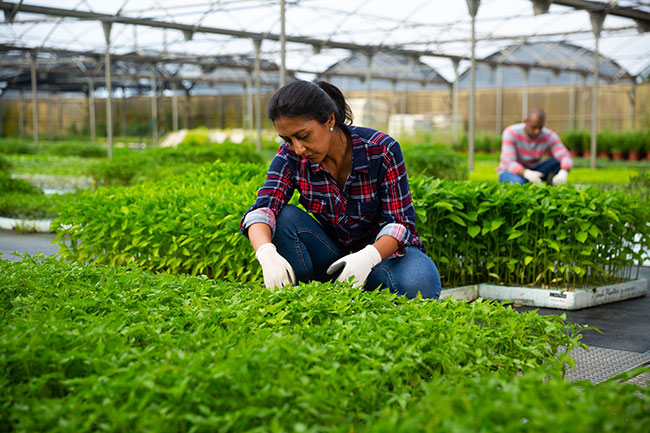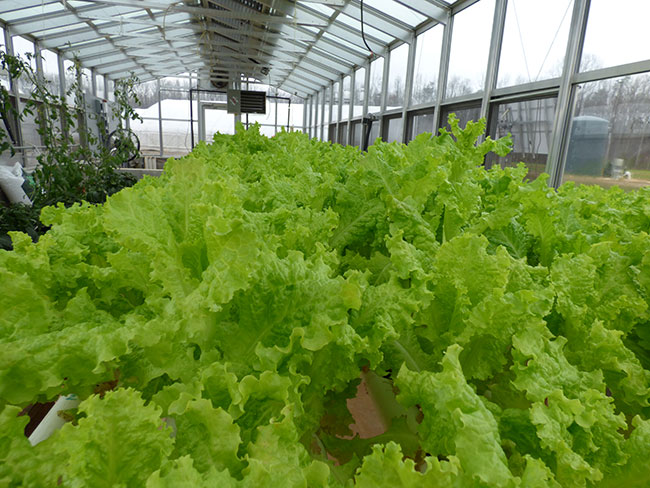
Growing Labor Pains
We hear it all the time from growers, operators, suppliers and consultants. It’s not just in the indoor growing world; it’s everywhere. No one can find the labor they need at a price they want to pay. How did it get like this?
For one, the average age of a grower in the controlled environment agriculture (CEA) industry is 57. To put it more starkly, the average age of a grower is 35 years older than most college graduates, and only five years away from qualifying for Social Security retirement. Those in the CEA industry are well aware of this shocking fact. The alarm bells have been ringing for decades, growing louder each year.
Compounding the problem is how growers are being pushed to produce more with fewer people. They shoulder more responsibility, sometimes managing multiple facilities at one time. Growers are increasingly relying on advanced technology to help maximize production, which requires tech-savvy people to manage. And these people require wages that growers aren’t used to paying.
Yet as growers retire in droves each year, high school and college graduates join the industry. What do we know about these young people? What attracts them to CEA? How can we encourage more of them? To find out, we spoke to professors at leading universities who prepare students for careers in CEA.

Why is There a Labor Shortage?
Garrett Owen is the assistant Extension professor of greenhouse and controlled environment at the University of Kentucky. When asked about the CEA labor shortage, he says, “Even I’m experiencing this problem. I’m struggling to hire students to help me with my research.”
Why? “The work is labor-intensive. When you compare the salary of a greenhouse manager to an engineer, it does not stack up.
I remind students that you can’t put a price on happiness and to pursue something you enjoy doing every day. But people want to be paid more while doing less.”
Rhuanito Ferrarezi agrees. He is an associate professor of controlled environment agriculture at the University of Georgia. He says, “The general public doesn’t understand what CEA is and might not be aware of the opportunities available in this field. Also, fewer people are interested in agricultural and food processing jobs, with so many other high-paying jobs available out there.”
Matthew Richardson is the acting director of the Center for Urban Research, Engagement & Scholarship in the College of Agriculture, Urban Sustainability and Environmental Sciences at the University of the District of Columbia. He believes that people miss the potential for a good career in agriculture/horticulture due to misconception, inaccessibility and inequality.

“There is a misconception that agricultural jobs are a person in a field with a hoe. In reality, the agriculture industry relies heavily on advanced technology, especially in CEA. Robotics, AI, and remote sensors are all important to CEA, and we need to give students experiences with that technology to encourage them to pursue a career in it.”
Michee Lachaud faces a different problem. As a professor at a Historically Black College & University, the school makes up for large endowments by focusing on personalized attention for students.
“I am doing the best to obtain financial and resource support to rear my students for careers in the CEA industry. The future success and sustainability of agricultural businesses largely rely on new technologies and the capacity of stakeholders to properly use them. For instance, I know that I cannot keep teaching my farm business management course based on a traditional approach that does not consider a greenhouse farm business plan or hydroponically whole-farm plan.
“Even for a student in agronomy or horticulture, the technology to optimize best management practices is not currently available on campus at HBCUs or in most of them. This is the reason we are applying for the 2022 USDA-NIFA proposal grant: ‘The FAMU Agricultural Business, Resource, and Innovation Center (FABRIC)’ that will tech equip one of our greenhouses to ensure that our students have the technological skills needed to immediately transition into job opportunities as other students from 1862 (land grant) universities.”
Technology and Community Engagement
So how do we address this labor shortage? Experts agree that advanced technological training and community engagement are important parts of the solution.
“We must educate the students to understand the industry, incorporate technology into production, increase pay, invest in training and professional development, and inform the public about the advantages and benefits of CEA-grown crops,” says Ferrarezi. He considers focusing on technological opportunities “essential” to attracting students to and preparing for a career in CEA, because “food production jobs depend on technology to reduce labor, increase yield, quality, flavor and nutritional content, enhance production practices, and boost profitability.”
His students agree. They are most interested in learning about irrigation, supplemental lighting control and automation.

The opportunity to work with advanced technologies is also a motivating factor for Owen’s students. “My class is the first time many of the students have had a chance to grow crops in a greenhouse. They have the opportunity to use basic greenhouse technology like pH readers, thermal imaging cameras and climate control systems. But I constantly get feedback that they want access to higher level technology to prepare them for careers in floriculture, cannabis or specialty crop production. They like learning about the science in the classroom and then seeing it in person in the greenhouse. We’re bridging the gap between theory and application.”
Internships are critical to bridging that gap between theory and application, as well as landing a full-time job offer by graduation. Every leading university has a robust and often mandatory internship program designed to create a school-to-jobs pipeline.
For example, Ferrarezi works closely with private companies to establish internships that will help his students hone what he believes to be the most important skills for success in the CEA industry: “Dependability, creative thinking, problem-solving, timely response, working in a connected world and transforming professional connections into potential long-term collaborators.”
He even goes a step further to lean on these companies to help him identify potential gaps in his curriculum. “I’d call companies and growers and work together to plan on the skills needed by the industry to continue investing, sustaining the growth, and training individuals to excel in their fields of expertise.”
Given the age of the average grower, industry leaders agree that a strong school-to-job pipeline will not be enough to replace those leaving CEA. Working with local communities to establish a job-to-job pipeline is also important.
Owen asserts that “In Kentucky, we can work with people coming from other industries that have fewer jobs, such as coal miners, and train them with the skills they need to enter industries with increasing job openings, like CEA. We can also train military veterans.”
Richardson also runs a robust Extension program across urban food hubs in Washington, D.C., where community members learn how to produce hydroponic and aquaponic crops alongside students. This kind of collaboration between universities and communities goes a long way toward dismantling misconceptions about and increasing access to urban agriculture, particularly for people of color. His hope is that community programs like these will attract more people to the CEA industry.
A Bright Future for CEA
Leaders of academic and community programs are working hard to recruit young people with an interest in cutting-edge technology and encouraging them to consider the rapidly growing CEA industry.
It’s working.
It is clear that students are attracted to CEA, in part, because they want to become experts in advanced technology. This is great news; students are interested in the very thing that is driving the future of the industry and that growers are hiring for.
CEA operations can leverage that energy and talent by developing internship programs with academic and community programs. These operations can enjoy the short-term benefit of adding talent to their team, as well as the long-term benefit of empowering a larger, more skilled CEA workforce for the future.
Like any young industry, there will be growing pains. Reducing barriers to entry such as high start-up costs and adjusting wages to name a few. Still, the future of CEA is looking bright.


 Video Library
Video Library 




















